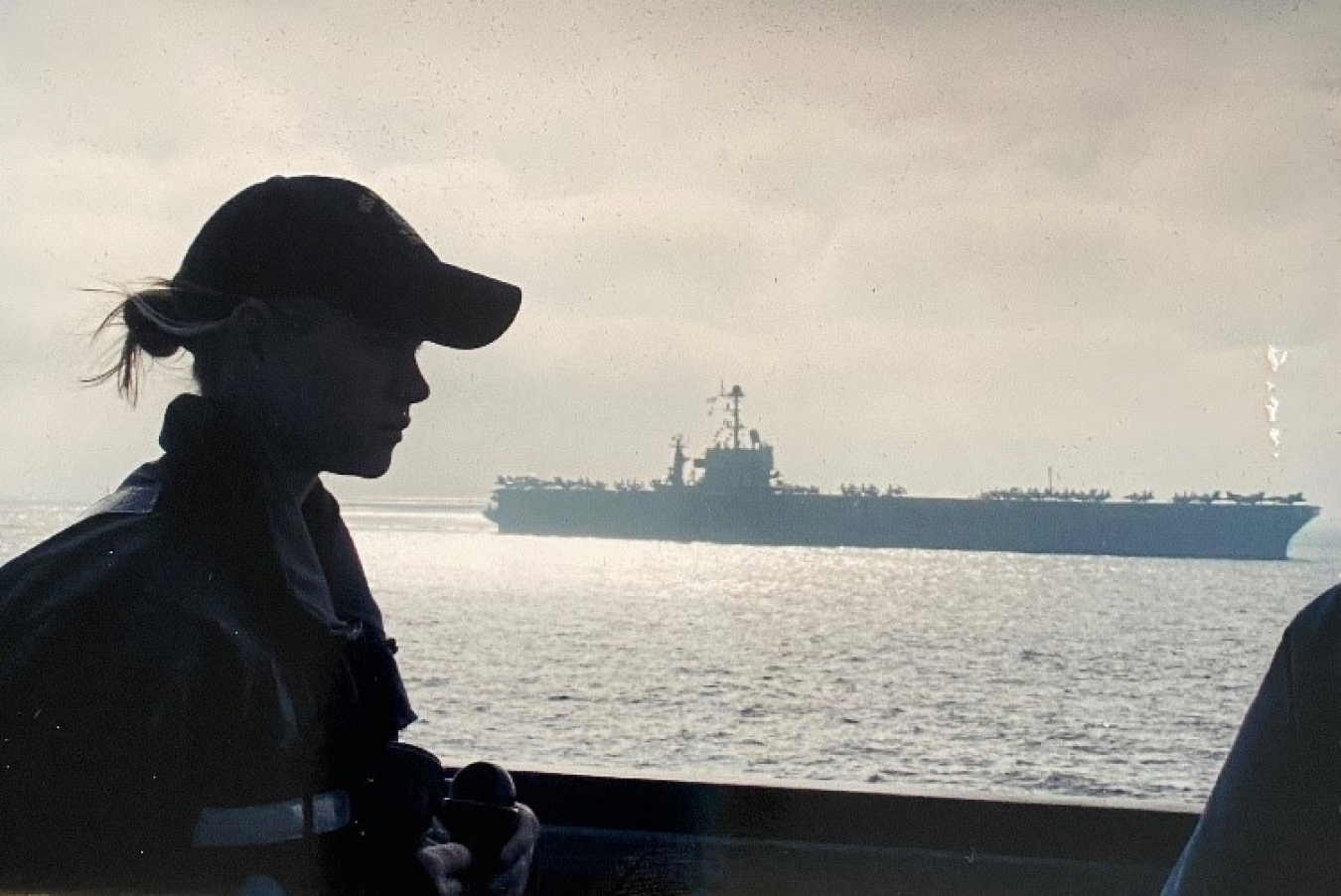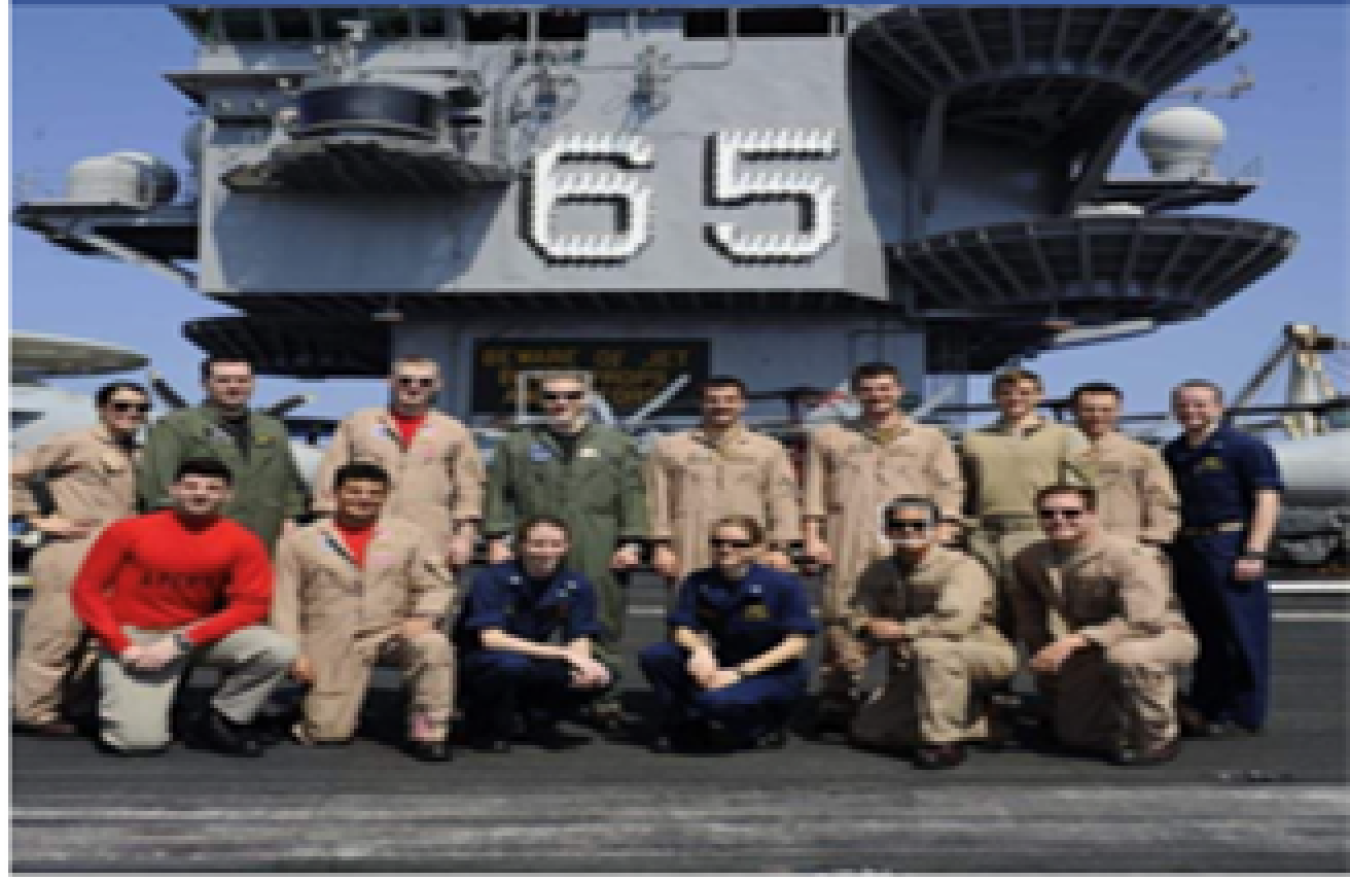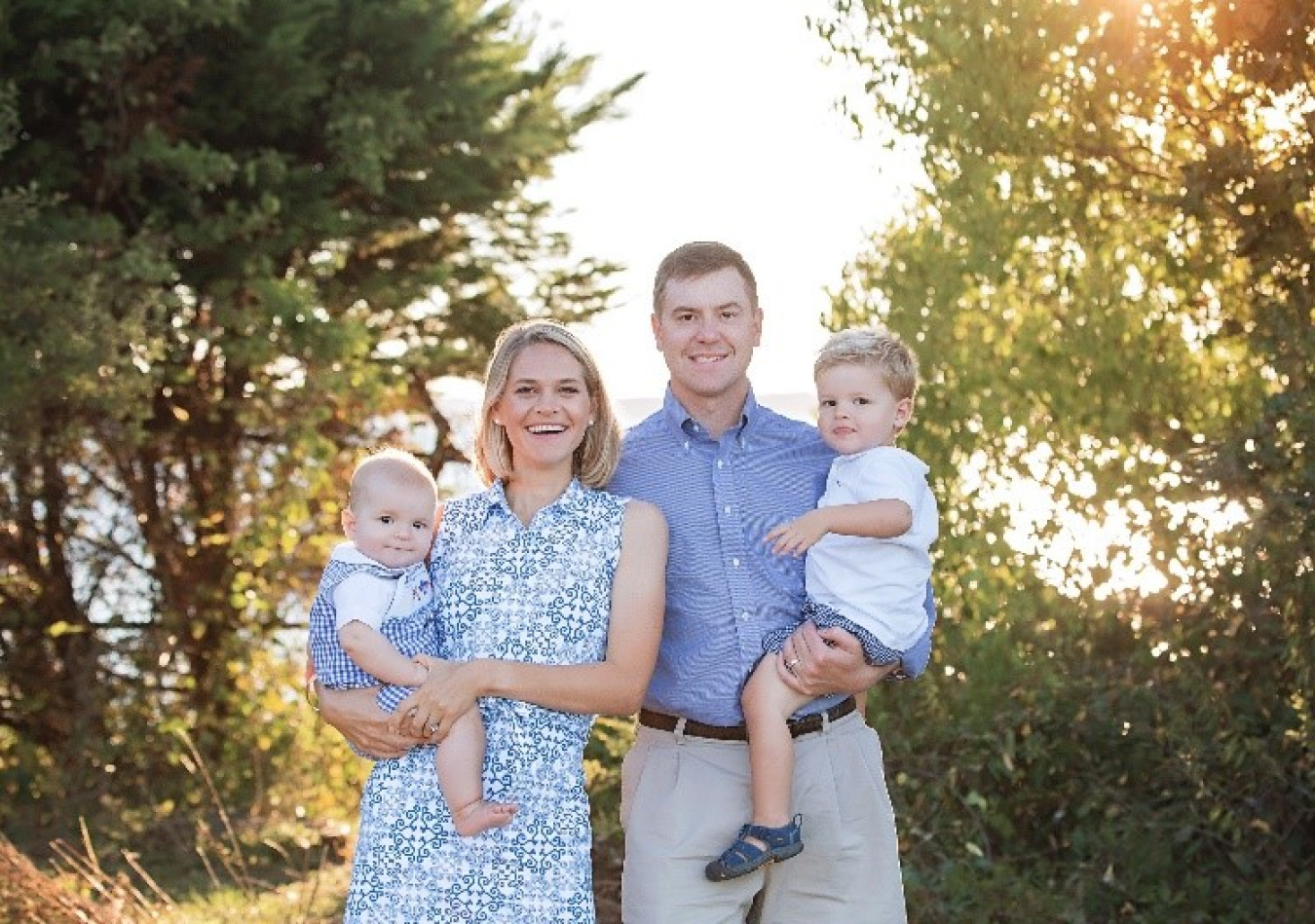Sarah Mustin knew she wanted to attend the U.S. Naval Academy since the 8th grade and she did thanks to her ability and determination. Characteristics which served her well in the Naval Nuclear Propulsion Program, and now in NNSA's Defense Programs.
National Nuclear Security Administration
March 27, 2023
Describe your role in NNSA. What is the best part about your job?
I am currently a Program Analyst in Defense Programs, in the Office of Secondary Stage Production Modernization working in the Uranium Modernization Program as a program manager for the Material, Recycle and Recovery program. I have more recently focused on management of our enriched uranium inventory, working with programs across NNSA to ensure mission requirements dependent on the use of enriched uranium continue to be met.
I started at NNSA in July 2021, and so far, the best part of my job aside from my amazing colleagues, is the amount of learning I get to do. Since starting a little over eighteen months ago, my experience at NNSA has provided me with numerous amazing opportunities to learn more about the nuclear enterprise. I feel like I am constantly learning something new through guest lectures, vault tours, conferences, and travel to NNSA sites and laboratories.
What did you study in school and how did it impact you personally and professionally?
I attended the U.S. Naval Academy and received a Bachelor of Science degree in political science, with a focus in U.S. government and a minor in Chinese. At the Naval Academy, about half of my course load was focused on science and engineering courses. I really enjoyed having the opportunity to also study political science and the Mandarin language during my time at the Academy.
I also received a master’s degree in engineering management. After graduating from the U.S. Naval Academy, I spent eight years in the U.S. Navy as a nuclear Surface Warfare Officer. During this time, I attended the Naval Nuclear Propulsion Program’s Nuclear Power School and Prototype and served onboard a nuclear-powered aircraft carrier overseeing the operation of the nuclear reactors and engineering plant. My time in the Navy gave me the technical knowledge and experience required to pursue this master’s and provided me with the tools for translating my experience in the Navy to the civilian workforce when pursuing a career outside of the Navy.

What led you to a career in nuclear security?
I knew I wanted to attend the U.S. Naval Academy since I was in eighth grade. My desire to be a nuclear Surface Warfare Officer came later in high school after learning more about my brother’s experience as an officer on submarines. My time in the Navy was very challenging, but I learned a lot and knew that I wanted to pursue a future career outside of the Navy in a similar field. I believe that NNSA is the perfect organization for this transition out of the Navy and into a civilian career of public service in nuclear security.
What’s one of your favorite things about working at NNSA?
My favorite thing about working at NNSA is by far the people. I have been really lucky to work with a group of smart, talented individuals that motivate me to constantly challenge myself and learn new things. My experience at NNSA so far has been one of inclusion and the welcoming of new ideas and challenges to the status quo.
What are the characteristics of the best teams you have been part of?
The characteristics of the best team I have been a part of so far include a mutual respect for everyone participating and their contributions to the team. A culture focused on respect for others, and one which allows for the broader sharing of ideas, can only benefit our organization.
Any advice for young women and girls interested in a career like yours?
The best advice for young women and girls interested in a similar career would be to work hard, have grit, and never give up. My ability to get into the U.S. Naval Academy, be selected for the Naval Nuclear Propulsion Program, and a future career in nuclear security was never a given and never came easy to me. Starting in high school, I had a goal. I knew what I wanted, but I had to work really, really hard to achieve this goal and I definitely faced setbacks along the way. The key is to not give up, and never underestimate the power of working hard and where that will lead you.

What are your thoughts on women only make up a third of STEM workforce and studies?
I am grateful for the numerous learning opportunities I’ve had that all contributed to me pursuing a career in nuclear security. I began by pursuing a career both in STEM and in liberal arts with a B.S. in political science, then built on that foundation during my training in the Naval Nuclear Propulsion Program and through my experiences as a nuclear Surface Warfare Officer in the fleet. Even as I enjoy working in this highly technical field, I continue to pursue an education in policy, and local and national politics. I think that too often there is a hard line drawn between degrees in STEM verses liberal arts, without the recognition of the value of technical coursework and job experience. In the spirit of diversity and inclusion, I believe there should be more opportunities available for individuals to pursue an education and a future career in STEM, including recognition of the broad set of experiences and beneficial contributions that a more diverse workforce provides.
Who is a woman that inspires you and why?
I really enjoy reading about women in leadership positions and the stories behind how they got there and the unique set of challenges they faced along the way.
A woman I greatly admire is Jill Ker Conway. She grew up in the Australian outback during World War II and overcame incredible challenges to become the first female president of Smith College. I also have a lot of admiration for the first female U.S. Supreme Court Justice, Sandra Day O’Connor and the life that led her to a career of service on the U.S. Supreme Court.
Tell us something interesting about yourself.
A fun fact about me, is that I am a military spouse, which means that in the first seven years of marriage, up until we moved to Washington, D.C. in 2020, we moved six times, including two cross-country moves and one tour overseas in Japan. It is safe to say that I am excited to finally be settling into the DC area as my husband transitions off active duty. When I am not working or spending time with my three young children, I love running. Since moving back to the DC area, I have really enjoyed long distance runs along the Mt. Vernon Trail and participating in local races.

